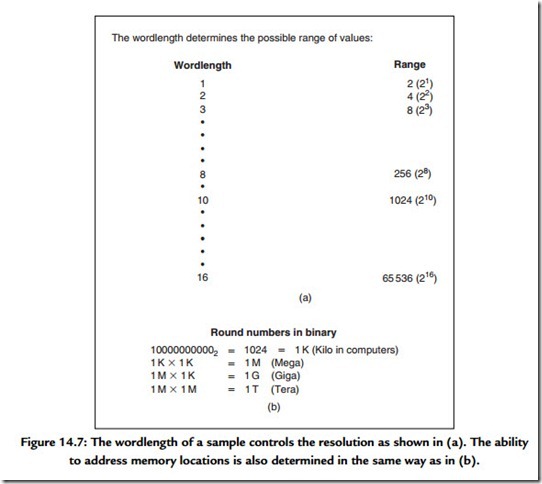Why Digital?
There are two main answers to this question, and it is not possible to say which is the most important, as it will depend on one’s standpoint.
a. The quality of reproduction of a well-engineered digital audio system is independent of the medium and depends only on the quality of the conversion processes and of any compression scheme.
b. The conversion of audio to the digital domain allows tremendous opportunities that were denied to analog signals.
Someone who is only interested in sound quality will judge the former the most relevant. If good-quality convertors can be obtained, all the shortcomings of analog recording and transmission can be eliminated to great advantage. An extremely good signal-to-noise ratio is possible, coupled with very low distortion. Timing errors between channels can be The wordlength determines the possible range of values:
eliminated, making for accurate stereo images. One’s greatest effort is expended in the design of convertors, whereas those parts of the system that handle data need only be workmanlike. When a digital recording is copied, the same numbers appear on the copy: it is not a dub, it is a clone. If the copy is undistinguishable from the original, there has been no generation loss. Digital recordings can be copied indefinitely without loss of quality. This is, of course, wonderful for the production process, but when the technology becomes available to the consumer, the issue of copyright becomes of great importance.
In the real world everything has a cost, and one of the greatest strengths of digital technology is low cost. When the information to be recorded consists of discrete numbers, they can be packed densely on the medium without quality loss. Should some bits be in error because of noise or dropout, error correction can restore the original value. Digital recordings take up less space than analog recordings for the same or better quality. Digital circuitry costs less to manufacture because more functionality can be put in the same chip.
Digital equipment can have self-diagnosis programs built in. The machine points out its own failures so the cost of maintenance falls. A small operation may not need maintenance staff at all; a service contract is sufficient. A larger organization will still need maintenance staff, but they will be fewer in number and their skills will be oriented more to systems than to devices.
